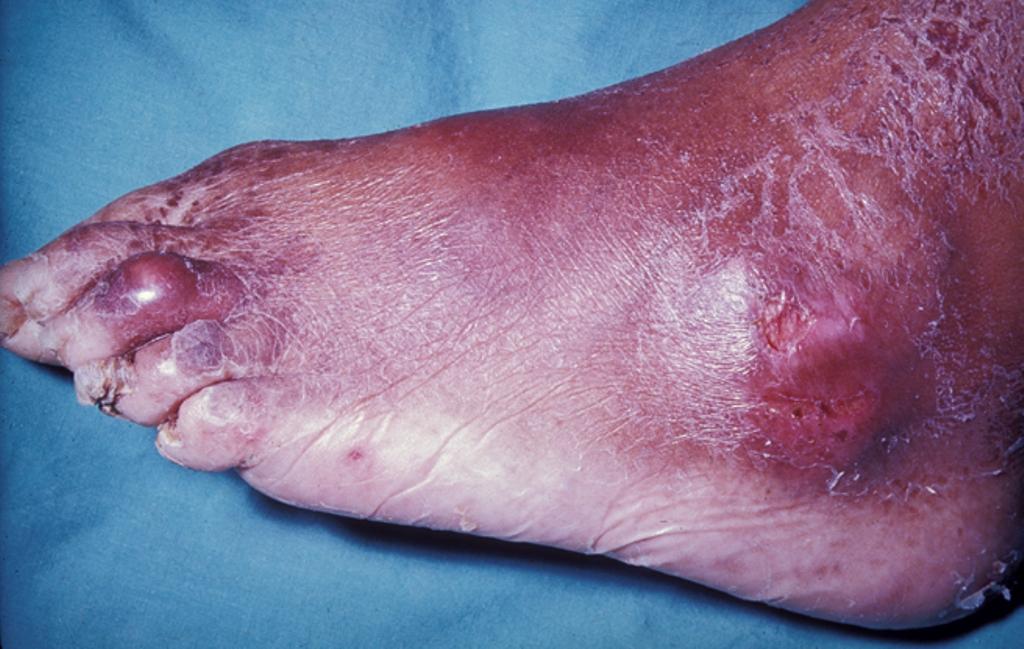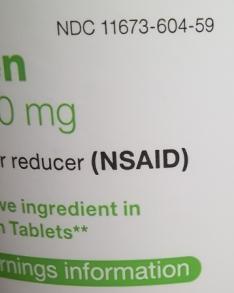Due to modern eating practices, including a diet heavy in trans fats and meat flesh, gout has become more common. A painful form of arthritis, gout was traditionally one of the ailments of the affluent and the royals. The big toe joints are frequently the first signs of gout manifesting as crippling, furious red swelling and pain along with terrible, searing, tearing agony.
Understanding Gout
There are four stages of gout, each with a unique set of symptoms and available therapies.
First Stage- Hyperuricemia or having too much uric acid in the blood due to ineffective uric acid removal from the body is the first stage of gout. Hyperuricemia is asymptomatic if this is the only symptom. However, not everyone with hyperuricemia will develop gout, but those who do need to be aware of its risks and side effects. Acute gout, the second stage of hyperuricemia, appears as it advances.
Second Stage- Acute Gout- Once urate crystals accumulate in the joints of the foot, ankle, or knee due to hyperuricemia, they produce swelling and moderate to severe discomfort, known as acute gout. This can cause the joints to become extremely painfully hypersensitive to touch, even from something as harmless as one’s sheets. The feet feel heated to the touch due to the redness and swelling that come with severe gout. If left untreated, acute gout attacks can become more frequent and worse, resulting in joint destruction, tendon, and other tissue damage.
Third stage Intercritical Gout- Interval gout is the time between acute gout attacks. The third stage also referred to as intercritical gout, has no symptoms. Urate crystals are continuously being deposited in the joints despite the absence of pain.
Fourth Stage Chronic Tophaceous Gout – Chronic tophaceous gout is characterized by the development of hard nodules called “tophi” in the joints and tissues around the joints, with total development frequently taking several years or more. Tophi is the most incapacitating condition, leading to the development of skin ulcers, and over time, it can cause irreversible joint damage. Rarely, and only if untreated for decades, does this happen. The fingers and ears are two additional body parts where tophi frequently manifest. Currently, there is a chance that the kidney injury will be permanent.
Treatments for Gout
Gout self-treatment options range from traditional painkillers to complementary therapies and everyday foods. Find out how to relieve gout pain in this article:
- Biofreeze – Synthetic or mint oil extracts are used to make Biofreeze Menthol. If used on the skin, menthol gives a cooling feeling that reduces inflammation in the tissues below the skin. Biofreeze can temporarily relieve painful bruises, backaches, muscles, joints, and slight arthritis discomfort. It can also be used to ease arthritis-related pain as well as muscle soreness. Biofreeze is offered in spray, single, roll-on, and gel formulations so customers can select how they want the product applied. Other topical analgesics, however, contain steroid and narcotic ingredients that have adverse side effects. The most fundamental component of Biofreeze is natural and has a track record of relieving pain.
- Nonsteroidal anti-inflammatory drugs – These medications, often known as NSAIDs, are sold without a prescription at pharmacies and supermarkets. They are used to manage discomfort but do not stop the damage that advanced gout does to joints. Dr. Nathan Wei, a well-known board-certified rheumatologist, advises using NSAIDs with caution due to potential side effects, which include bleeding, ulcers, and indigestion. They work to stop blood from clotting and can conflict with drugs that thin the blood. In smaller doses, NSAIDs help with edema and pain reduction. Motrin, Advil, and Aleve are three common over-the-counter medications brands.
- Gout and You (Therapeutic Flare-Up Relief Cream)- There are numerous all-natural remedies available from Gout and You to reduce gout discomfort. The Therapeutic Flare-Up Relief Cream, their signature item, has received 5-star reviews from hundreds of customers. Some clients even claimed that the alleviation was almost immediate after only one application. Gout and You thoroughly explain each component of their Therapeutic Flare-Up Relief Cream, including its origins, functions, and historical applications. Its ingredients include arnica montana extract and Ilex leaf extract to enhance circulation and act as an anti-inflammatory. At the same time, MSM promotes the health of connective tissues and is also anti-inflammatory. The Tea Tree Oil contains antibacterial and therapeutic effects, while menthol penetrates deeply and functions as a local anesthetic in topical pain treatment solutions. It also contains B6 vitamin pyridoxine, which supports nerve health. Its Aloe Vera content aids healing moisturizes and softens skin, and has anti-inflammatory properties.
- Gout Gone – The homeopathic remedy Gout-Gone treatment helps your body break down uric acid in the joints and can assist with mild joint aches, pains, swelling, and redness. The recommended dosage for Gout-Gone is 0.5mL every 20–30 minutes till symptoms go away, but only after the initial treatment. You will then only need to take 0.25 mL 3-5 times daily as necessary. You can drop it directly into your mouth or dilute it with a tiny bit of juice or water before taking a sip. A 59 mL bottle of Gout-Gone will last between 30 and 60 days, depending on how frequently you use it.
- Topical Pain Creams- While oral drugs address uric acid buildup, gout sufferers endure discomfort and inflammation in the affected regions. Because they offer virtually quick gout pain medication during gout attacks, topical creams are frequently used to treat these symptoms. While topical creams can provide immediate pain relief during a gout flare, oral painkillers must first pass through the circulation to be effective. Topical creams can help lessen gout pain by providing comfort directly at the site of the pain.
- Natural Remedies for Gout- Most prescription and over-the-counter medications have adverse effects. As a result, it is advisable to use natural therapies. The best strategy to control uric acid levels in the blood is to have a diet free of purine-containing foods. Red meat, organ meats, and shellfish must be consumed in moderation. Additionally, stay away from alcoholic beverages and fructose-containing drinks. The likelihood of gout attacks will also be reduced by always remaining hydrated. Taking calcium supplements can help prevent gout attacks from happening more frequently. People who should take precautions are those whose families have a history of gout.
CONCLUSION
The medications used to treat an acute episode of gout and the drugs needed to avoid gout complications like tophi can be divided into two categories. Nonsteroidal anti-inflammatory medicines (NSAIDs), colchicine, and corticosteroids are some medications used to treat gout attacks and reduce pain and inflammation.
Gout medications either inhibit the synthesis of uric acid or enhance its excretion. Allopurinol, febuxostat, pegloticase, and probenecid are a few examples.
Although taking drugs is the most effective strategy to treat and prevent gout, making a few little modifications to one’s lifestyle can significantly lower the risk of future episodes. Avoid alcoholic drinks like beer, spirits, and sweetened beverages that include fructose or sugar. Take in a lot of water. Reduce your consumption of foods high in purines, such as red meat, organ meats, and seafood. Eat a lot of fresh veggies and turn to low-fat dairy products for protein. If you are overweight, exercise frequently and reduce your weight.




